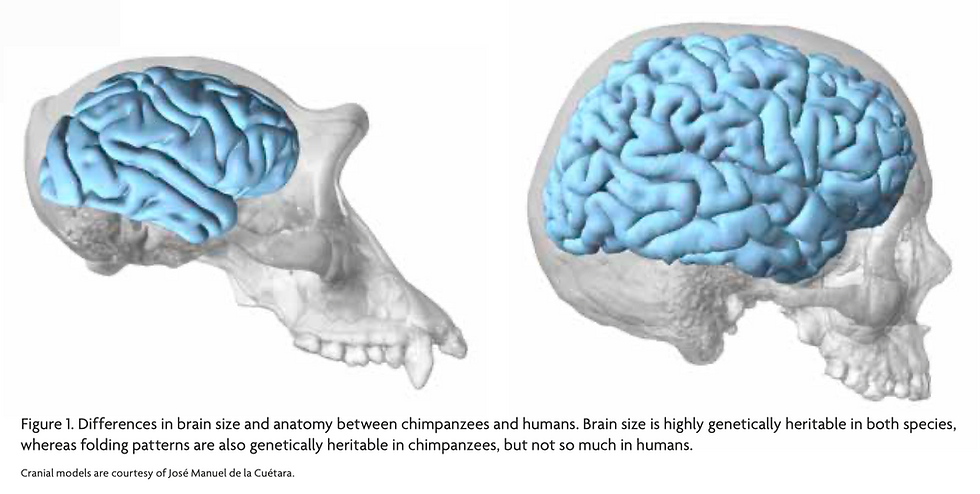Dawkins vs. Gould
- Wu, Bozhi

- Mar 17, 2019
- 3 min read

I have recently read the book Dawkins vs. Gould: Survival of the Fittest written by Kim Sterelny, a philosopher who studies philosophy of science, philosophy of biology in particular.
This is a wonderful book summarizing the famous debate between Richard Dawkins and Stephen Jay Gould. I have read several books by Dawkins and Dennett in the past, which have really made me form a kind of stereotypical perspective towards Gould's ideas. Now, after reading this book, I actually find some of his ideas to be very plausible, even convincing. Maybe there does not exist such a great conflict between gradualism and the true "punctuated equilibrium" theory Gould has proposed. The distinction he made between "diversity" and "disparity" might be an important idea, and it might be a problem for us to overemphasize the role of "selection" in the evolutionary history...
The following part is selected from the final chapter of the book, which briefly summarizes the contrasts between Dawkins' views and Gould's ideas. Hope you enjoy the debate!

Let's remind ourselves of the fundamental contrasts between Dawkins' views and those of Gould, and then summarise the state of the debate.
Dawkins argues that:
(i) Selection fundamentally acts on lineages of replicators. Most replicators are genes; chunks of DNA. But not quite all: in animals capable of social leam ing, some replicators are ideas or skills. And the earliest replicators were certainly not genes.
(ii) Genes typically compete by forming alliances which build vehicles. In such cases, genes succeed or fail through their distinctive, repeatable influences on these vehicles. A gene which generation by generation enhances the sensory acuity, metabolic efficiency or sexual attractiveness of a vehicle will be replicated more frequently than its rivals.
(iii) Certain genes have other replication strategies. Outlaws enhance their prospects at the expense of the adaptive design of the vehicle. Extended pheno type genes advantageously engineer the physical, biological or social environment of the vehicle they are in.
(iv) Dawkins is not committed by the logic of his position to the view that vehicles are individual organisms - groups might be vehicles. But the existence of co operation between animals is no reason to think that groups of animals, rather than the individual animals in the groups, are vehicles. In the right circumstances, it pays individual animals to co-operate.
(v) The central problem evolutionary biology must explain is the existence of complex adaptation. So, natural selection has a special status within evolu tionary biology, for complex adaptation can only be explained by natural selection.
(vi) From the perspective of evolutionary biology, humans are an unusual species. For they are vehicles of memes as well as genes. Nonetheless, the basic intellectual tools of evolutionary biology - espec ially those explaining co-operation, reciprocation, and sociality - apply to human evolution also.
(vii)Extrapolationism is a sound working theory. Most evolutionary patterns are accumulations over vast stretches of time of microevolutionary events. Phyla - the great lineages of animal life - began as ordinary speciation events and they grew the same way. But not quite all evolutionary patterns fit the extrapolationist view. Evolvability, for example, might involve some form of lineage-level selection.

As we have seen, Gould's picture is quite different. As he sees matters:
(i) Selection usually acts on organisms in a local population. But, in theory and in practice, selection acts at many levels. Groups of organisms can form populations of groups, with some groups doing better than others. Within a lineage of species, some may have characteristics that make them less likely to go extinct, or more likely to give rise to new species. It is even possible to have selection acting on individual genes within an organism, though this is the exception not the rule.
(ii) Many characteristics of individual organisms are not explained by selection. Furthermore, there are important patterns in the large-scale history of life that have no selective explanation. Selection is important, and evolutionary biologists must under stand its operation. But it is just one of many factors explaining microevolutionary events and macro evolutionary patterns.
(iii) Extrapolationism is not a good theory. Large-scale patterns in the history of life - in particular, those tied to mass extinction episodes - cannot be under stood by extrapolation from events we can measure in local populations.
(iv) Humans are evolved animals. But attempts to explain human social behaviour that make use of the techniques of evolutionary biology have largely been failures, vitiated by a one-sided understanding of evolutionary biology. They have often been biologically naive.

References
Sterelny, K. (2007). Dawkins vs. Gould: Survival of the fittest. Cambridge: Icon.







Comments